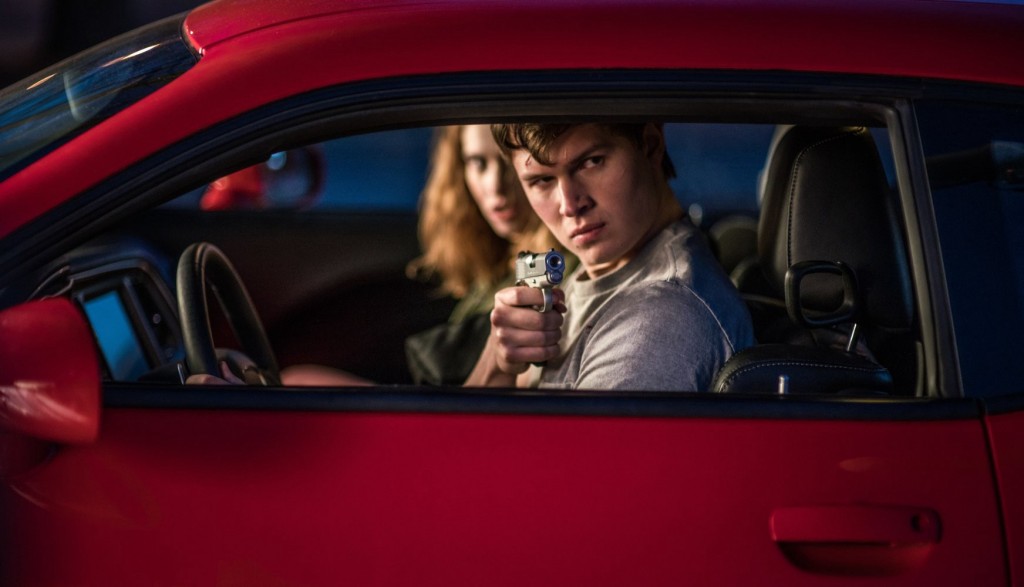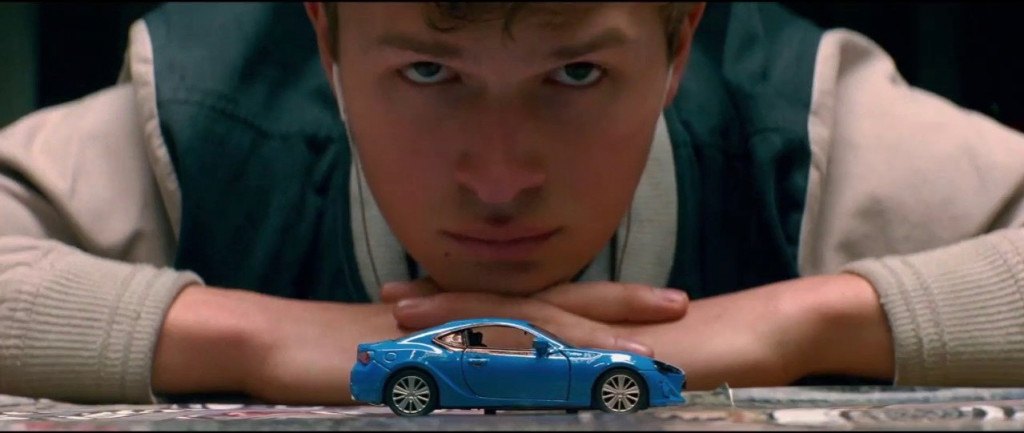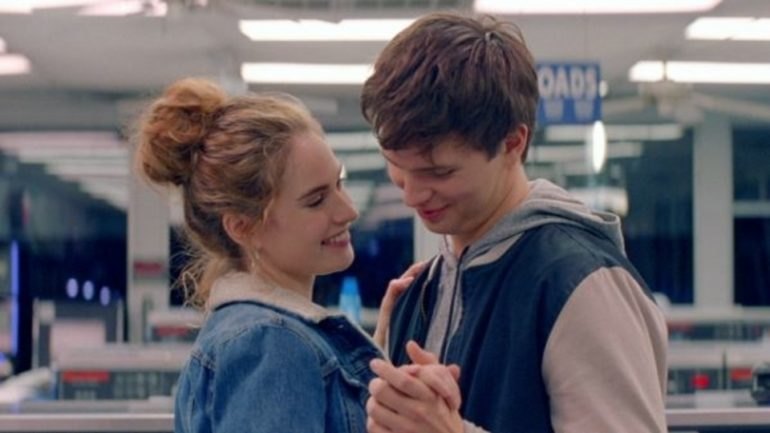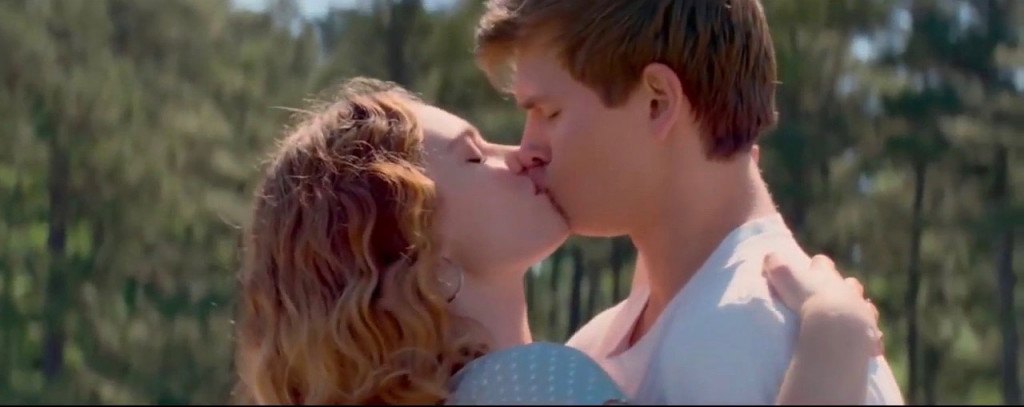“He’s loony. He just likes his tunes”. That is probably the best way to describe Baby Driver, the titular character in Edgar Wright’s high-octane, high-drama action thriller. Add to that driving cars, and you get an exciting combination worthy of anchoring a story. As is the case with its titular protagonist, ‘Baby Driver’ is fueled by electric music and a pacy background score. It acts as the perfect companion to Wright’s quick-cut style that almost leaves the viewer breathless in certain scenes. The exhaustive style doesn’t hold back and keeps at you until the very end. There aren’t many filmmakers who understand the significance of music quite like Wright. The tunes in the background aren’t ancillary props used to fill gaps, but become the very element of the storytelling process.
‘Baby Driver’ boasts of a stellar cast, one that is tailor-made for an action movie. It balances the forces and personalities of its stars to render an insatiable blend of eclectic styles that has a universe of its own. Ansel Elgort, Jamie Foxx, and Jon Hamm are among the many stars who make an appearance. ‘Baby Driver’ is primarily a love story, which it disguises for quite some time, almost until the end. Overall, the film might feel to be confused in what it really is. That is where Wright’s skills as an auteur save the movie from becoming a hapless mess. Unlike other Wright films, though, ‘Baby Driver’ only finds humor in little spurts, not inherent humor that often characterizes his work. Dry-comedy has been a perennial feature of his films and ‘Baby Driver’ is no different. Let us explore more about what the film meant exactly.
Summary

‘Baby Driver’ is about its titular character, who is a getaway motorist. He lives with his affectionate deaf foster father and works with fellow tenant Doc, an expert strategist who carries out heists in banks and stores. Baby indulges in Doc’s plans purely on the basis of an incident from his childhood. Doc’s plans work because of Baby’s efficiency and dexterity in balancing speed with deception. He is, therefore, an indispensable part of the heists. The backstory reveals Baby compensating Doc for damaging his car. With one last mission to go, Baby finally dreams of getting out of the mess after meeting the love of his life, Debra. Baby’s incomprehensibility assumes evidentiary importance in this mission, where almost the whole crew is changed, except Bats, played by Jamie Foxx.
The new crew -Baby, Bats, and couple Buddy and Darling- are supposed to purchase illegal arms before their mission. Bats realizes that the dealers are cops in disguise and opens fire. In the ensuing tussle, all the cops are massacred and the four members of the crew escape. The news agitates Doc who reveals the dirty cops were on his payroll and a part of the plan. Inclined to cancelling the plan, Baby convinces Doc to go ahead with it. As the members prepare to give shape to their plans, Buddy and Bats discover the various mixed tapes that Baby has made -from conversations of the past and present- to make funny songs. The two, though, take his actions as that of an informant and prepare to kill him and Joseph. After Baby is confronted and brought for trial to Doc, he pleads innocence and convinces the crew of his harmless intentions.
During the heist, Baby plans to escape with Deborah, who reciprocates his feelings. Unbeknownst to the crew, Baby plans to ditch them and leave this business for good. During the mission, Bats’ inhumane tendencies disgust Baby after he murders an innocent officer, and the latter refuses to drive. Indignation, Bats hits him with a shotgun and orders him to drive them away. Baby does so and rams the car into a truck that kills Bats. During a shootout with the police, Darling gets shot and dies, as Buddy and Baby make it through. Incensed at the loss of his loved one, Buddy blames Baby for Darling’s death and vows revenge.
Now frantic, Baby rushes Joseph to an elderly home and leaves his earnings for him to be taken care of. Worried about Deborah, Baby goes to the diner to pick her up and is met with an already waiting Buddy, who’s got the two on his rifle. Baby shoots Buddy, though not fatally, and leaves him to be arrested, stealing a car to get away with Deborah. Baby rushes to Doc and begs him to help. Initially, Doc refuses but seeing the Baby and Deborah’s feelings for each other, and he supplies the duo with cash and directions to get out of the country. He delays the incoming cops, killing three of them, dying in the process.
Baby and Deborah rush out, only to meet an enraged Buddy, hungry for revenge. The two neutralize him and head on their journey. After a brief moment of peace and togetherness, the two run into a police roadblock. Baby surrenders and vows to reunite with Deborah five years later. When the day comes, the two gayly bathe in their reunification, meeting as they had never met before.
Unique Introduction to Information

Edgar Wright’s uniqueness comes from his simplistic approach to storytelling. Unlike his contemporary peers, Wright heavily relies on music and stark visuals to impede conventional dialogue introductions and characterizations. That might sound a lot like Wes Anderson, but it is the way Wright constructs his narratives that make him a revered commodity. ‘Baby Driver’ sees a continuance of Wright’s remarkable talents of using over-used storytelling tropes and presenting them with a breath of freshness while divulging information. Movies function on how much the viewer knows.
For example, a Hitchcock movie will leave you guessing until the very end, not choosing to show you the other side of what you see. The suspense, then, is what you don’t know. Compare that to someone like a Wes Anderson and you get a completely different way of experiencing storytelling through characters. Wright somewhat falls in between. Like his other features, he uses unique methods of divulging information to the viewer, working his way through props and stand-alone set-pieces to translate complex and altruistic ideas into simple ones. At the same time, Wright is also good with developing quirky characters along the way.
If you have a look at the screenplay of the movie, the sparse presence of dialogue will take you aback. The attention to detail is undoubtedly paranoid and explains the rich and meaningful visuals. The first six minutes of the movie, in fact, don’t contain a single dialogue. But despite nothing being said, and good marketing, we know exactly who Baby is. We are introduced to the protagonist in a way that we understand how will he be in the movie. The first heist that Baby pulls off has something very similar to the next one. Jon Bernthal, an unimportant accessory in an otherwise crucial scene, and Jon Hamm stand out in comparison to Baby.
Wright purposely uses just the two categories, shall we say, in single frames, so that the viewer instantly is enabled to differentiate between the bad guys and the good guys. While Bernthal and Hamm are represented as rugged, suspicious, and unpredictable, Baby stands out as a trustworthy and docile being. Baby doesn’t see at all what the guys he drives do, being deeply engrossed in his tunes. He gets conscious and wary when a police patrol suddenly passes by, just like any law-abiding and respectful person would. This instantly communicates to us that he isn’t the bad guy in the movie, fearing law like all the good ones.
This use of images as a visual medium to enhance storytelling is used aptly by Wright and shines through in ‘Baby Driver’. Much like the Coen brothers, Wright appropriates dark undertones of comedy via the use of stories within stories. Framing a scene within a scene is the Coens’ forte, and Wright does pretty well with the limited opportunity he gets to experiment.
The Visual Tapestry and Quick Editing
Wright’s overbearing use of the visual medium to communicate has been well-established in the previous heading. Right from furthering the narrative, to giving character-traits, Wright’s images do it all. Another remarkable feature of Wright’s brand of cinema is his descriptive and quick-paced editing. Normally, action movies rely more on the contents of a single scene rather than connecting two scenes. Baby Driver’s transition is smooth, well-choreographed and voracious in describing its protagonist.
Baby comes across as a morally upright, law-abiding citizen. His disgust of violence and unethical practices is made pretty clear with subtle expertise by Wright. For instance, the scene where the second team robs a bank and the three goons beat up the security guards, Baby pulls his car ahead and blocks the view, choosing not to be a spectator to the consequences of his actions. Such mastery is rare to achieve, and Wright uses it as a tool to describe the kind of person Baby really is. Using images to tell stories has been a fundamental part of moviemaking.
Since the inception of the medium, silent films have created a tradition of using moving pictures to tell a story. Wright mixes it with his quick-cut editing style and infuses in his version of storytelling a deep sense of the tangible presence of the viewer in the scenes. Baby’s past takes up a couple of scenes, anchored by his tinnitus, that he tunes out with music. Like his bodily flaw, his past floats with him wherever he goes, whatever he does. Right from the start to the end, Wright sticks to his magic formula, and it works just fine.
Music as a Language

Music is by far the most essential commodity in Wright’s brand of cinema, especially ‘Baby Driver’. The soundtrack, dominated by classical and rock music, works as a second language apart from dialogues for Wright to communicate with us. Unlike mainstream Bollywood movies, which use music and item numbers to sell tickets, Wright’s use of music is commendable and is undoubtedly the defining characteristic of his vision for a film. Scenes, which would otherwise be centered around dialogue and reaction to those words, are filled with music and the fluid camerawork. The pace of the film almost leaves you short of breath, immersing you in its colorful cinematic universe.
The car chase scenes are filmed in the background of rock music — fast, carefree, raw — while the romance between the two protagonists is shot in the midst of relaxing music, that comes alive with soothing visuals and sophisticated use of clothing and lighting. Music, thus, is the primary language for viewers to understand character dynamics. Wright’s vision for his characters makes the whole exercise a very fruitful one, one that elevates the quality of the movie.
The Ending

Let us talk about the ending now. While it might seem to be very straightforward, Wright’s directorial instincts make it quite interesting. After Baby and Deborah have seemingly overcome the very last of the obstacles between their love, they discover a police barricade, breaking their hearts. Baby accepts his fate and surrenders. The ensuing trial sees many witnesses come up and speak in favor of Baby. The judge hands him a 25-year sentence with five years on good behavior. In what seems almost like a dream sequence, Baby and Deborah reunite and share a passionate kiss.
The ending sort of divides the film into two parts. The first is where Baby is a part of a world that he doesn’t belong to or wants to be in. The second one is a world that he wants to live in with Deborah, one where he is forever with her, and he isn’t a spectator to any violence. When the two happen upon the police barricading, Deborah wants to get away, stepping instantly on the accelerator, but Baby, on the other hand, stops her, pressing on the break, this time, intending to start his new life in the correct fashion. It is his liberation from the first world that presses upon Baby to conduct himself in the right way this time. In the following montage, Baby’s actions are akin almost to chores at a functioning household. This transition from a world of violence and immorality places Baby in a world that he truly belongs.
Remember the Dolly Parton reference in the film before? “Dolly Parton, I like her.”, says Baby. And she says, “Everybody wants happiness, nobody wants pain, but there can’t be a rainbow without a little rain.” The whole process that Baby has to go through in the film; driving the bad guys around, then fighting them, culminates with the rainbow of his life; Deborah. The rainbow, in the end, is certainly like a happy ending for Baby. On the ending, Wright himself says:
“I think the end scene is up for interpretation. And I sort of learned quickly through the test screening process that I should let people interpret it how they want. I think it’s an important thing with movies where you don’t have to state your actual intention because nobody’s response to it is wrong. I think that’s a good thing to do; you don’t want to have anybody say, ‘No, you’re wrong, you read that wrong.’ It’s better if you have two different interpretations.”
Wright’s refusal to put down our throats an ending that is one-dimensional demonstrates his bravery as a director and storyteller. Whether Baby actually met Deborah outside the facility will remain a mystery. It is up to you to interpret the ending in the way you deem fit. If you are an optimist, you might interpret the ending as a reality. But if you are pessimist, you might interpret almost blurry visuals as a dream that Baby seems to share with Deborah, instead of a real-life scenario.
Final Word
‘Baby Driver’s immeasurably humane outlook of the society and everything that is wrong with it is an unforgettable experience that mounts a wonderful maelstrom of emotions with its razor-sharp editing. Wright’s great talents as a storyteller enhance Baby’s tedious ordeal toward salvation, making the journey thoroughly exciting and satisfactory. Certainly, don’t miss out on this one!
Read More in Explainers: Manchester by the Sea | Gone Girl | John Wick 2


You must be logged in to post a comment.